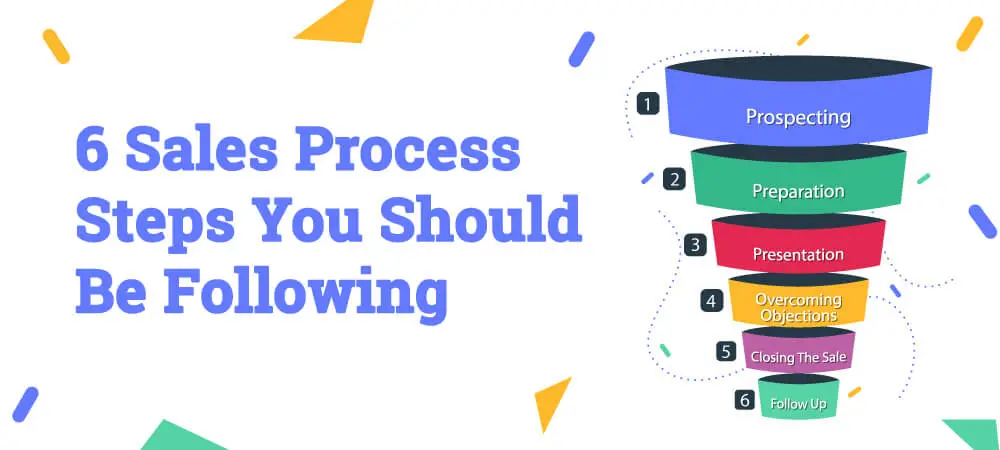Like in any business field, developing an effective sales presentation is a strategic activity. A well-tailored sales presentation aids you to pitch your product or service to prospective clients and will make the whole difference between closing the deal or walking away into thin air. From defining clear objectives to knowing your audience to including engaging visuals, there are several fundamental elements you want to consider in how you put together your winning sales pitch. Let’s dive into the essential steps and tips on how to create that compelling sales presentation that really leaves an impression on your audience in this blog post.
Understand your audience: Offer your presentation in ways that best address their needs or interests in order to gain higher engagement and relevance.
Focus on the solutions, not the problems: Let your customers know what problems your product or service can effectively solve or overcome in their lives.
Telling a good story: Use various techniques of storytelling to make your presentation memorable and emotionally relevant to your audience.
Use visuals effectively: Make use of high-quality visuals such as images, videos, and infographics to deepen understanding and retention of the information
Rehearse and hone: Rehearse the sales presentation several times to make sure delivery will be smooth and don’t close your ears for any form of betterment or refinement for your pitch.
How to create a Sales Presentation
Setting Clear Objectives
Defining Clear Objectives In this stage, one of the most important steps to making a great sales presentation is defining clear objectives. Before engaging content, you have to decide what you want to achieve with your presentation. This may be generating leads, closing the deal, or educating potential clients-once you have a clear objective, it will help guide you through the remainder of your planning process.
Researching Your Audience and Product
There is no way you will make a sales presentation if you are unaware of the audience and the product. The better you know your audience’s needs, pain points, and preferences, the more chances you stand to capture them with a presentation. Similarly, profound knowledge of your product or service enables you to drive out the value propositions that entice your customers into purchase. Such knowledge will also help in suppressing any potential objections your customers might raise.
Proper research is the basis of an effective and impactful sales presentation; you have to know the demographics, behaviors, and challenges of your target market as well as the product, service, or other item that you have to sell. Knowing your audience’s demographics, behaviors, and challenges will allow you to create a presentation that directly speaks to their needs and interests. At the same time, having a good knowledge of the features, benefits, and comparative advantages of the product or service you are selling will prepare you to sell it most effectively during the sales presentation.
Setting clear objectives, conducting detailed research, and leveraging this knowledge will set the stage for a powerful and persuasive sales presentation that resonates with your audience and drives results.
Creating Your Message
The Power of Storytelling in Sales
The art of storytelling in sales is an art essential to craft a compelling and memorable presentation. Use a narrative that lingers in your audience’s consciousness to emotionally connect them to your value proposition. Most attention is focused on stories; they improve trust and make information more relevant, tangible, and memorable. Adding an anecdote, case study, or testimonial into a sales presentation can really be the icing on the cake that brings your message to life for prospects.
You’ll want to feature benefits over features in a sales presentation with storytelling. Stop talking about the features of your product or service; instead, explain how those features directly benefit him. In other words, you would relate those features to real-world scenarios or outcomes with which your prospect could identify so that you can paint a picture of value that your offering brings to his life or business. This messaging approach takes the conversation off of technical specifications and into tangible benefits – allowing your audience to readily see what’s in it for them and how that might impact their lives.
Knowing the difference between a feature and a benefit is the key to constructing a great sales message. Features are anything the characteristics are of your product or service; then there are the benefits, which represent the positive outcomes or solutions they bring to the client. Highlighting the benefits over the features enables you to help your audience see how your offering is going to meet their needs, solve their problems, or fulfill their desires. That means you can present your sales campaign based on the value proposition, hitting the mark of your prospects’ needs and motivations.
Presentation Designing
Visual Aids and Their Impact
Keep your visuals simple but meaningful. Charts, graphs, images, and videos will help explain your key points and make the presentation interesting to your audience. Use this with text on the slides sparingly, and let the visual tell the story instead of the text.
Brand consistency and professionalism
Make sure that the overall aspect of the presentation looks professional and reflects the branding of your company. Do use consistent color, fonts, and imagery from your brand guidelines to make it look more cohesive and polished, which will add to a greater share of trust and confidence in your target audience.
The visual presentation of your message will depend upon the delivery of your message to your audience. Consistency in branding strengthens your company’s identity and allows you to establish a sense of credibility and professionalism; from selecting font styles and colors to deciding which logos to use, or many other details.
Irrespective of how good your sales pitch may be, it’s all about presentation. A well-thought-out presentation with effective visual aids and careful use of brand, making sure that branding is carried at every single point, will bring your sales pitch just that much more to the forefront, towards a lasting impression on your audience.
Delivery Techniques
Engaging Your Audience
It’s very important to have engagement for an effective sale presentation. First, you need storytelling or eye contact and other interactive aspects during your presentation. That’s because, by including your customers in the conversation, you make them care about what you have to say, thus making a higher possibility of selling successfully.
Handling Questions and Objections
Questions and objections play an important part in the success of a sale presentation. When your customers raise an objection, acknowledge the concern raised by the audience and handle it peacefully with confidence. Use this as an opportunity to benefit and to feature more about your product or service. Handling the questions and objections transparently helps you gain credibility and confidence from your potential customers.
Delivery Techniques
As you make a sales presentation, so present your ideas clearly and crisply. Be sure to establish confidence and professionalism in the speech and speak as if speaking with all the authority the subject deserves. Continue to be an active listener and thoughtfully answer questions and feedback presented by your target audience. To complement your presentation, use visual aids such as slides or product demonstrations that help bring home key points.
Accessing Technology
Presentation Software Tools
Presentation tools such as PowerPoint, Keynote, or Prezi really provide aspects to an otherwise traditional sales presentation that would be lacking in dynamic visuals and smooth transitions between topics, as well as engaging multimedia elements that hold their audience’s interest. More importantly, they help add structured format to your content and assist you to keep your train of thoughts for the presentation.
Virtual and Hybrid Presentation Strategies
Virtual and hybrid presentation approaches have greatly transformed the way presentations can be delivered. These hybrid approaches have made presentations easier with increasing virtual reachability and flexibility. Salespeople have also had to shift through the manner of dealing with clients in the new digital environment. Video conferencing-based presentations offer the advantage of convenience and flexibility. Hybrid presentations account for in-person and virtual elements, thus allowing wide reach and inclusivity.
Virtual and hybrid presentations are more of an engagement and interaction style that requires professionals in sales to interactively engage and break into different presentations. During a hybrid presentation, sales professionals have to interact with a virtual audience while presenting virtually instead of presenting to a single room full of people. It is done in numerous smaller rooms.
Practice and Rehearsal
Stellar Pitch
A sales presentation: the number of reiterations needed to perfect it. Practice your pitch a few times before you actually know your content inside out and can speak with conviction. You can practice in front of the mirror or on video. Practice your delivery in front of a colleague and seek feedback. The more you practice, the more effective you will be at getting your message across to your audience.
Using Feedback
In providing feedback, you are ascertaining whether the sales presentation is effective and meeting its purpose. You can get constructive criticism from colleagues or coaches or even clients to help you understand what needs improvement. Be open to suggestions and take adjustments seriously to ensure that your presentation really comes out perfect. The answer to this just sets you for fine-tuning your pitch to be more effective in the sales.
Rehearsals are an integral part of a good sales presentation. There should be time spent both in practicing your content and in rehearsing the body language, tone of voice, and the overall delivery. You will find places to stumble, refine your presentation, and get more comfortable with the material. This helps build confidence as well as polish, and therefore will make you look more attractive to the audience, increasing the probability of success. How to create a sales presentation
Final Thoughts
To create a successful sales presentation one requires careful planning, understanding the needs of his audience, emphasizing the benefits of his product or service and relating with the clients. Using the best practice with compelling visuals and storytelling, one is sure to bring the interests of his audience into focus. To learn how to write a superb sales presentation, check out How to create an effective Sales Presentation. If you have no good sales presentation, you can lose your prospect or not sell to him.
How to create a sales presentation
How to create a sales presentation
Learn how to handle objections during your sales pitch
https://pulsebusiness.net/handling-objections-in-your-sales-pitch-2/
How do you handle objections during a sales pitch?






